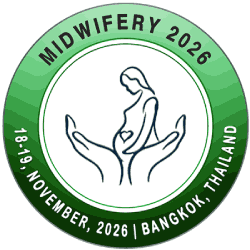
Jelena Stulic
Narodni Front Clinic, SerbiaPresentation Title:
The importance of empirical therapy in treating postpartum infections
Abstract
Introduction: The incidence of postpartum infections ranges between 5% and 7%, representing a significant socioeconomic and medical issue even in developed countries. Most postpartum infections can be prevented through timely identification and management of risk factors and common causative pathogens. Risk is significantly elevated in obese patients, those with diabetes, hypertension, and immunocompromised individuals. A positive vaginal swab for bacterial vaginosis, Group B Streptococcus infection, premature rupture of membranes, an excessive number of vaginal examinations during labor, manual removal of the placenta or retained placental tissue are all factors that increase the risk of developing postpartum infections. Endometritis is the most common postpartum infection, occurring in 1–3% of vaginal deliveries, increasing to 5–6% in the presence of risk factors, and up to 10–20% in cesarean deliveries compared to vaginal births. The primary symptom of endometritis is fever >38°C, appearing between postpartum days 2 and 10, either in early or late puerperium. Additional symptoms include lower pelvic pain, uterine tenderness, subinvolution of the uterus, foul-smelling lochia, and general systemic symptoms such as fatigue, malaise, and headache. One of the major challenges in treatment is the increasing resistance of bacteria to commonly used antibiotics. Antimicrobial resistance is considered a “silent pandemic” and, according to the World Health Organization (WHO), was responsible for approximately 1.27 million deaths globally. The Infectious Diseases Society of America (IDSA) introduced the acronym ESKAPE, which refers to the bacteria most likely to develop antibiotic resistance: Enterococcus faecium, Staphylococcus aureus, Klebsiella pneumoniae, Acinetobacter baumannii, Pseudomonas aeruginosa, and Enterobacter species. These pathogens are particularly dangerous due to their ability to adapt and persist even within modern healthcare systems. Special attention should be paid to Enterococcus-related infections, as these organisms are innately resistant to commonly used antibiotics such as cephalosporins, monobactams, meropenem, and clindamycin. Inappropriate use of antibiotics has led to the emergence of vancomycin-resistant enterococci (VRE), which are particularly difficult to treat. VRE-related sepsis carries a high mortality rate, reaching up to 58% in some cases.The gold standard for the treatment of postpartum endometritis is a combination of clindamycin (900 mg every 8 hours) and gentamicin (5 mg/kg every 24 hours), with or without ampicillin (2 g loading dose followed by 1 g every 6 hours). This recommendation is based on a meta-analysis conducted in 2015, which included 40 randomized controlled trials.
Objective: To identify the most common pathogens responsible for postpartum infections at our clinic and compare these findings with the literature, in order to apply appropriate empirical antibiotic therapy based on the prevalent etiological agents.
Methodology and Results: A total of 218 women diagnosed with postpartum infection and treated at the “Narodni Front” Obstetrics and Gynecology Clinic in 2024 were included in the study. The overall incidence was 4.24% relative to the total number of deliveries during the observed period. The most frequently isolated pathogens were: Escherichia coli 35%, Enterococcus spp. – 30%, Klebsiella pneumoniae 18%, Staphylococcus spp. 10%, other bacteria 9%.
Conclusion: The cornerstone of postpartum infection management involves thorough assessment of risk factors and a solid understanding of the most common causative organisms. This allows for the appropriate use of empirical antibiotic therapy, followed by targeted treatment based on culture results.
Biography
TBA


